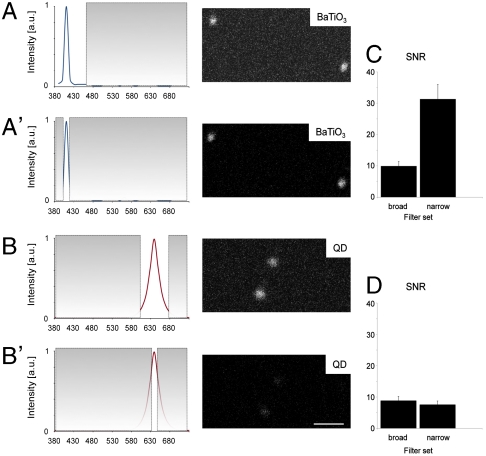Fig. 3.
SHG nanoprobes can be imaged with high SNR and virtually no signal background (A–D). Using optimized emission filter sets SHG nanoprobes provide superior SNR in highly scattering and absorbing environments. BaTiO3 nanocrystals (A and A′) and water-soluble CdSe/ZnS quantum dots (B and B′) were immobilized in 2.5% Intralipid/0.05% Indian Ink/20% polyacrylamide gel, illuminated with 15% of 820-nm light, and respective signal intensity recorded either with a long (A and B) or a narrow (A′ and B′) bandpass emission filter. The SNR for BaTiO3 nanoparticles improves in this particular case 3-fold when a narrow emission filter is used (C) blocking most background signal from random absorption due to intense scattering, yet allowing transmission of a major part of SHG signal (A′, image). The SNR for QDs however cannot be increased when a narrow filter is used (D). In this case not only the background signal, but also the signal emission is significantly reduced (B′, image). Consequently, only BaTiO3 can be imaged with virtually no background signal while in parallel increasing the SNR. (A–B′) Gray areas in the emission spectra of BaTiO3 (blue line) and QDs (red line) indicate blocked transmission by emission filters. (C and D) The SNR columns represent the means ± range of two measurements each. Bar = 500 nm.

